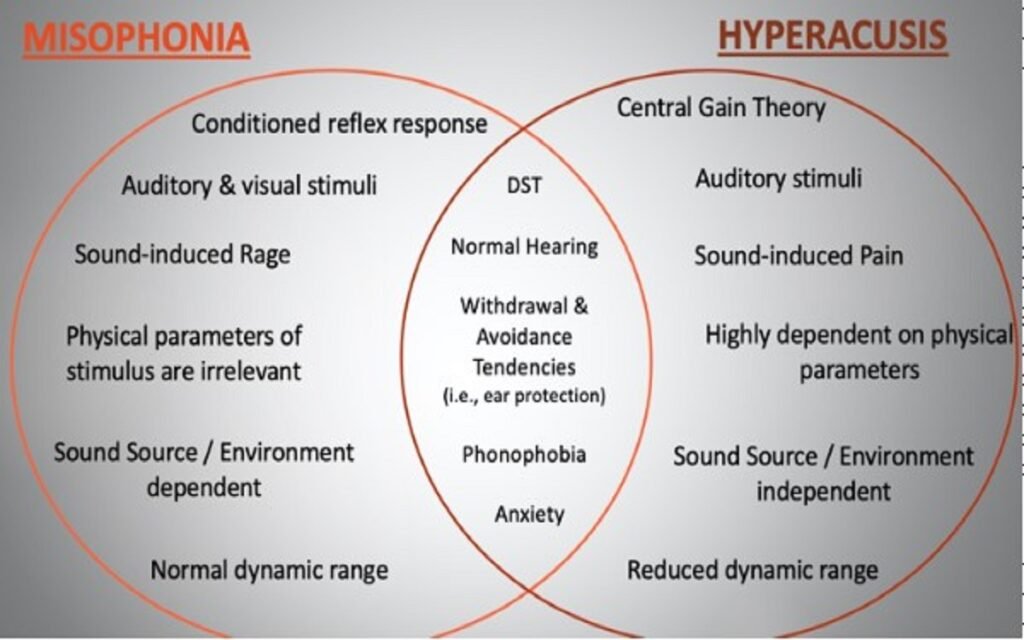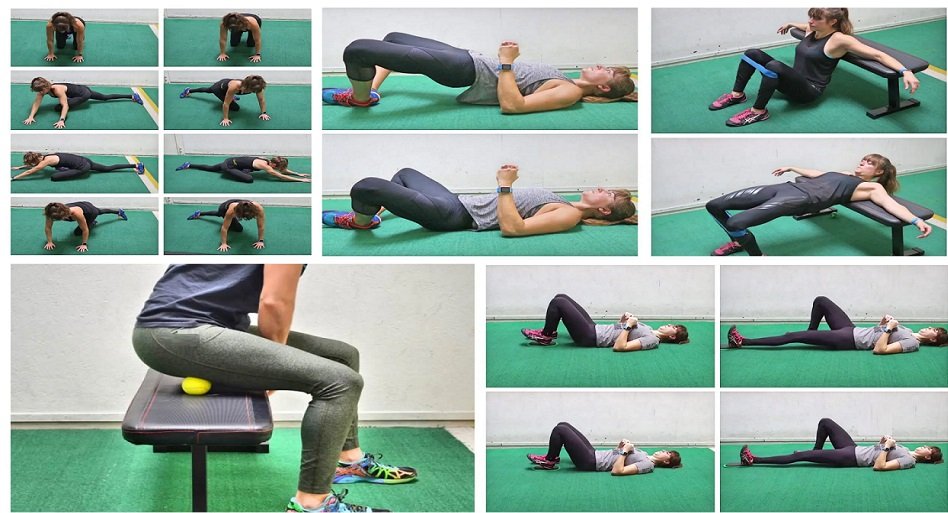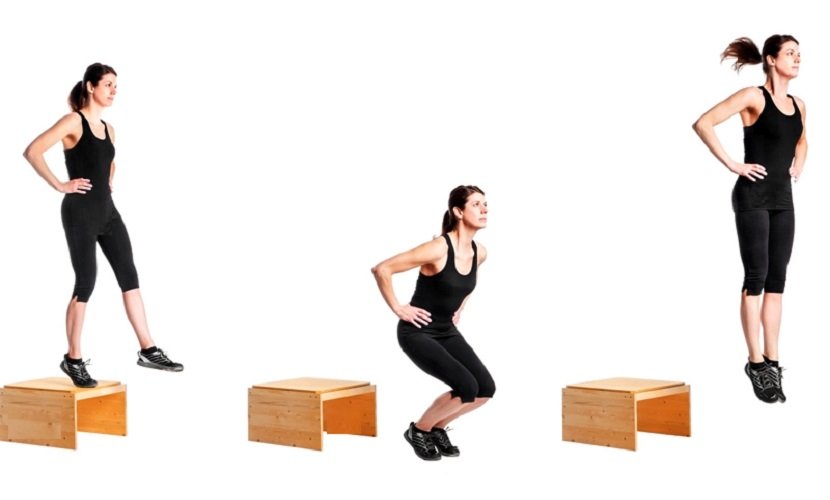Health And Fitness
What is Misophonia: Common Triggers and Available Treatment

Image Source: health.harvard
Misophonia is a condition that has been gaining attention in recent years but remains widely misunderstood. Despite its growing recognition, it is not officially classified as a mental disorder or any other type of disorder. Misophonia is characterized by an aversive reaction to certain repetitive or pattern-based sounds, often leading to intense emotional responses such as anger, anxiety, or disgust. This article delves into what misophonia is, its potential triggers, and the current understanding of its treatment.
What is Misophonia?
The term “misophonia” literally means “hatred of sound.” However, it does not refer to a general dislike of noise, but rather a specific, intense emotional reaction to certain sounds. These sounds are typically repetitive and may involve patterns, such as the sound of someone chewing, breathing, or tapping. Misophonia is sometimes referred to as Selective Sound Sensitivity Syndrome or sound rage, highlighting the strong emotional reactions that these sounds can provoke.
How Does Misophonia Manifest?
When someone with misophonia hears a trigger sound, their body responds with autonomic arousal—essentially, their fight-or-flight response is activated. This can lead to a range of distressing emotions, including:
- Anger
- Irritability
- Anxiety
- Disgust
These emotional responses may also be accompanied by behavioral reactions, such as avoiding situations where trigger sounds are likely or acting out in anger.
Common Triggers of Misophonia
The triggers for misophonia are often sounds that are repetitive or have a distinct pattern. There are two primary schools of thought regarding what types of sounds qualify as triggers:
- Body-Related Sounds: Some experts believe that the most common triggers are sounds directly related to the human body, such as chewing, breathing, or swallowing.
- Pattern-Based Sounds: Others argue that any repetitive sound can be a trigger, whether it is related to the body or not. Examples of such sounds include:
- Typing on a keyboard
- Whistling
- Foot tapping
- Clock ticking
- Engine noise
- The rustling of plastic wrappers
Interestingly, the intensity or volume of the sound does not necessarily correlate with the severity of the reaction. Even soft or low-volume sounds can trigger significant distress.
Is Misophonia a Recognized Disorder?
As of now, misophonia is not officially classified as a disorder in major diagnostic manuals such as the Diagnostic and Statistical Manual of Mental Disorders (DSM). This means it is not recognized as a standalone mental health condition. However, it is an area of active research, and there is ongoing debate about whether it should be classified as a distinct disorder or considered a symptom of other conditions.
Misophonia often coexists with other disorders, a phenomenon known as comorbidity. Some of the conditions that frequently occur alongside misophonia include:
- Tourette Syndrome
- Obsessive-Compulsive Disorder (OCD)
- Obsessive-Compulsive Personality Disorder (OCPD)
- Various anxiety disorders
- Tinnitus (ringing in the ears)

Image Source: pexels
Treatment Options for Misophonia
Given that misophonia is not yet an officially recognized disorder, there is no established treatment protocol. However, some treatment methods have been explored with mixed results.
- Cognitive Behavioral Therapy (CBT): CBT has shown some promise in helping individuals manage the symptoms of misophonia. This form of therapy aims to change the patterns of thinking or behavior that are causing the patient’s distress.
- Exposure and Response Prevention (ERP): This therapy, often used for OCD, involves gradual exposure to the trigger sounds while helping the individual resist the urge to react negatively.
Other treatment approaches focus on managing related symptoms such as anxiety, anger, or avoidance behaviors. Since these feelings are common in various mental health conditions, therapies that target these symptoms can be beneficial for those with misophonia.
The Future of Misophonia Research
As awareness of misophonia grows, so too does the need for more research to understand this condition better. The lack of a formal classification means that misophonia may be underreported, and many individuals may not realize that their experiences have a name. Continued research will be crucial in determining whether misophonia should be recognized as its own disorder and what the most effective treatment strategies might be.
Treatment and Management
Behavioral Techniques
Behavioral techniques offer valuable tools for managing misophonia. Individuals can learn to identify and modify their reactions to trigger sounds. Techniques such as mindfulness and acceptance-based strategies help in reducing emotional responses. A case study demonstrated significant improvement using these methods. The study emphasized the importance of personalized treatment plans. Tailored approaches address the unique nature of each individual’s experience with misophonia.
Sound Therapy and Desensitization
Sound therapy and desensitization provide additional coping mechanisms. These methods aim to reduce sensitivity to trigger sounds over time. Retraining counseling often accompanies these therapies. A case study highlighted the benefits of such interventions. The study reported a decrease in the severity of symptoms following therapy. Consistent exposure to controlled sounds helps individuals build tolerance. Gradual desensitization supports the long-term management of misophonia.
Professional Interventions
Cognitive Behavioral Therapy (CBT)
Cognitive Behavioral Therapy (CBT) serves as a cornerstone in professional interventions for misophonia. CBT focuses on altering negative thought patterns associated with trigger sounds. A detailed case study explored the application of intensive CBT for misophonia. The study reported significant changes in emotional responses and appraisals. Structured sessions provided a framework for addressing specific challenges. Individualized CBT plans enhance the effectiveness of treatment.
Medication and Other Treatments
Medication options for misophonia remain limited. Some individuals explore medications to manage anxiety or depression related to misophonia. Healthcare providers must inform patients about the current state of research. No randomized controlled trials have evaluated treatments for misophonia. Clinicians should educate patients on the uncertainty surrounding medication efficacy. Ongoing research aims to identify more targeted treatment options.
Comparative Analysis
Brain Structure and Function
Differences in Individuals with Misophonia
Misophonia involves unique brain structure and function. Individuals with misophonia exhibit heightened physiological responsiveness. Emotional reactivity to specific auditory stimuli appears pronounced. The auditory cortex and limbic system show hyperconnectivity. This neurological basis distinguishes misophonia from other conditions. Research highlights abnormal activity in the salience network. These findings underscore the distinct nature of misophonia.
Research Findings and Studies
Research on misophonia reveals significant insights. Studies identify differences in brain activation patterns. Trigger sounds provoke intense emotional responses. These reactions occur irrespective of sound loudness. Misophonia research remains in the early stages. Ongoing studies aim to understand the condition better. Researchers explore potential treatment options. The goal is to improve management strategies for affected individuals.
Misophonia vs. Other Sound Sensitivities
Misophonia vs. Hyperacusis
Misophonia and hyperacusis differ fundamentally. Misophonia involves emotional reactions to specific sounds. These reactions include anger, irritation, and disgust. Hyperacusis relates to sensitivity to sound loudness. Individuals with hyperacusis find loud noises distressing. Misophonia triggers responses regardless of volume. The context of sounds plays a crucial role in misophonia. Understanding these distinctions aids in accurate diagnosis.

Image Souce: audiologyonline
Misophonia vs. Phonophobia
Misophonia and phonophobia also present differences. Misophonia centers on emotional responses to particular sounds. Common triggers include chewing, breathing, and tapping. Phonophobia involves fear of loud sounds. Misophonia does not include fear but intense emotional reactions. The distinction lies in the response. Recognizing these differences enhances comprehension of sound sensitivities.
Misophonia presents a significant challenge for those affected, impacting daily life and relationships. Awareness and understanding of this condition are crucial. Individuals can benefit from professional support and innovative solutions Tom Dozier, a leading figure in misophonia research, has provided invaluable guidance to many. His dedication has helped sufferers find relief and build supportive communities. Seeking help empowers individuals to manage symptoms effectively. Misophonia requires compassion and informed approaches to improve the quality of life for those affected.
1. What is misophonia?
Misophonia is a condition where certain sounds trigger intense emotional reactions, such as anger, anxiety, or disgust. Common triggers include sounds like chewing, tapping, breathing, or repetitive noises.
2. What causes misophonia?
The exact cause of misophonia is not fully understood, but it is believed to involve an abnormal connection between the brain’s auditory system and the limbic system, which is responsible for emotions. Genetics, past experiences, and neurological factors may play a role.
3. How do I know if I have misophonia?
If you experience strong negative reactions to specific sounds that others might find normal or non-bothersome, you might have misophonia. Common symptoms include irritation, anger, and the urge to leave the situation when hearing these sounds.
4. What are common misophonia triggers?
Triggers can vary from person to person but often include:
- Chewing or eating noises (e.g., slurping, crunching).
- Repetitive sounds (e.g., pen clicking, foot tapping).
- Breathing or sniffing.
- Keyboard typing or mouse clicking.
- Lip smacking or throat clearing.
5. How is misophonia diagnosed?
Misophonia is typically diagnosed by a mental health professional or audiologist. Diagnosis involves discussing your symptoms, triggers, and emotional responses to certain sounds. There is no specific test for misophonia, so the diagnosis is primarily based on self-reported symptoms.
6. Can misophonia be treated?
There is no cure for misophonia, but treatment options can help manage symptoms. These include:
- Cognitive-behavioral therapy (CBT) to change negative thought patterns.
- Sound therapy using background noise or earplugs to mask trigger sounds.
- Counseling to develop coping strategies and reduce anxiety.
7. Is misophonia related to other conditions?
Misophonia can sometimes coexist with other conditions, such as anxiety, obsessive-compulsive disorder (OCD), or sensory processing disorder. However, it is a distinct condition with specific symptoms related to sound sensitivity.
8. How can I manage misophonia in daily life?
Managing misophonia involves:
- Using noise-canceling headphones or earplugs in trigger situations.
- Creating a quiet environment or using white noise to mask sounds.
- Communicating with family or colleagues about your condition to avoid triggers.
- Practicing relaxation techniques like deep breathing or mindfulness.
9. Are there support groups for people with misophonia?
Yes, there are online and in-person support groups where individuals with misophonia can share experiences, coping strategies, and receive emotional support. Connecting with others who understand the condition can be helpful.
10. Is misophonia recognized as a medical condition?
While misophonia is recognized by many health professionals, it is not yet officially classified as a distinct disorder in diagnostic manuals like the DSM-5. However, awareness of the condition is growing, and more research is being conducted.
Health And Fitness
Walgreens Closing 1,200 Stores: A Major Shift in U.S. Retail Pharmacy

Walgreens has announced plans to close 1,200 stores across the U.S. by 2027 in an effort to optimize its operations. This decision comes after facing profitability challenges, increased competition, and market shifts. CEO Tim Wentworth cited underperforming locations and a difficult consumer environment as primary reasons for the closures. The company aims to focus on its core retail pharmacy business while cutting costs and improving long-term growth potential.
Why Is Walgreens Closing Stores?
Walgreens faces multiple challenges, including shrinking profit margins and decreased foot traffic. In response to inflation and lower consumer spending, the company is streamlining operations by targeting underperforming locations for closure. The ongoing shift to online pharmacies and the rise of competitors like CVS have also put pressure on Walgreens’ brick-and-mortar stores.
Impact on Customers and Communities
Many customers worry about losing access to convenient pharmacy services, especially in smaller communities. However, Walgreens aims to maintain robust service levels by focusing on profitable stores and enhancing its digital offerings. The closures could create opportunities for local pharmacies to fill the gap left by Walgreens in certain areas, though concerns remain about the broader impact on healthcare access.
What’s Next for Walgreens?
Walgreens is not just shutting stores but also revamping its business strategy. The company is reducing its stake in VillageMD and refocusing on pharmacy operations. Walgreens is not just closing stores; the company is also implementing a major shift in its business strategy. This includes reducing its stake in VillageMD and refocusing on its pharmacy operations.
The company will continue to offer retail health services, but with a leaner footprint and improved operational efficiency. As these changes unfold, consumers may see further shifts in how and where they receive pharmacy services. The company’s strategic shift is a response to a changing retail landscape and the need to adapt to changing consumer preferences. Walgreens is making a significant investment in its pharmacy operations to ensure that it can provide the best possible pharmacy care for its customers.
Most Searched Queries Regarding Walgreens Closures:
- “Why is Walgreens closing stores?”
- “List of Walgreens stores closing”
- “Impact of Walgreens closures on healthcare”
- “Alternatives to Walgreens pharmacy services”
Walgreens’ future will depend on how well it adapts to changing consumer preferences and a highly competitive retail landscape.
Financial Struggles & Reduced Profitability
Walgreens has been struggling with reduced profit margins due to inflation, higher shrink (inventory losses from theft and errors), and declining foot traffic. The ongoing changes in the retail pharmacy landscape have prompted Walgreens to reevaluate its operations and shutter underperforming stores. This decision is part of a larger effort to cut costs, streamline its footprint, and optimize the company’s future profitability.
The company is also seeking to improve its ability to compete with other retail pharmacies, such as CVS Health and Rite Aid. Walgreens is also looking to improve its ability to compete with online retailers like Amazon, which have been expanding their healthcare offerings. The decision is also part of a larger effort to cut costs, streamline its footprint, and optimize the company’s future profitability.
Impact on Stock Performance
Walgreens’ financial challenges have caused its shares to drop significantly—over 45% in the last year. In response, the company also lowered its profit forecast for fiscal year 2024 to between $2.80 and $2.95 per share, down from the previous estimate of $3.20 to $3.35 per share.
Customer Service Adjustments
Though the store closures will reduce Walgreens’ physical presence, the company plans to enhance its digital services. It is also reworking its health services, including retail health clinics and pharmacy services, to focus on high-performing regions. Walgreens is reducing its involvement in secondary ventures, like VillageMD, to realign with its core retail pharmacy business.
Workforce Reductions
As part of its cost-cutting strategy, Walgreens recently announced that it will be closing 1,200 stores by 2027. The company also revealed that it will be reducing its workforce, including layoffs across its corporate and retail divisions. While the exact number of job cuts has not been specified, the company has stated that it will be making the necessary changes to ensure its long-term success. This includes layoffs across its corporate and retail divisions, though the company has not specified the exact number of job cuts.
Questions from Consumers
- “How many Walgreens stores are closing?”
- “What will happen to Walgreens employees?”
- “Will Walgreens’ pharmacy services be affected by store closures?”
- “Are there alternatives to Walgreens in my area?”
The closures are part of Walgreens’ strategy to address the rapidly changing retail pharmacy market, ensuring long-term growth while navigating current economic challenges.
FAQs on Walgreens’ Store Closures
1. How many Walgreens stores are closing?
Walgreens plans to close around 1,200 stores by 2027, primarily focusing on underperforming locations.
2. Why is Walgreens closing stores?
Walgreens is closing stores due to declining profit margins, high operational costs, inflationary pressures, and competition from other pharmacies and online retailers.
3. Will pharmacy services be impacted?
While some stores will close, Walgreens intends to enhance its digital pharmacy services to maintain customer access to prescriptions.
4. What will happen to Walgreens employees?
Layoffs are expected as a result of these closures, but the company has not specified the total number of jobs affected.
5. How will this impact local communities?
Closures could lead to reduced access to pharmacy services in certain areas, particularly smaller communities, but Walgreens is working to consolidate operations to maintain essential services.
6. How do I find out if my local Walgreens is closing?
The company will release specific lists of store closures over time, so keep an eye on official announcements or check with your local store.
7. Are there alternatives to Walgreens?
Customers can explore other national chains like CVS, Rite Aid, or local pharmacies, depending on location and services offered.
Health And Fitness
How to Choose a Rehab for Lasting Recovery

Choosing the right rehabilitation center can be one of the most transformative decisions in your journey to sobriety. It’s more than just picking a place—it’s about finding the support system that will walk with you toward lasting recovery and a better quality of life. Did you know that 80% of patients report improved health after completing their programs? With the right rehab center, your chances of staying drug-free after treatment rise to as much as 95%.
The path to recovery is deeply personal, and the rehab center you choose can play a pivotal role in shaping your future. This decision can be the key to unlocking a healthier, happier life. You deserve the best care, so take the time to make an informed choice that will support your long-term success.
Identifying Personal Treatment Goals
Assessing Your Needs
Defining your personal treatment goals helps you focus on what truly matters in your recovery journey. What do you want to achieve? Is it maintaining sobriety, improving your mental health, or rebuilding relationships? By being clear about your goals, you can choose a rehab center that aligns with your vision for a better future.
It’s also important to understand the level of care you need. Some people may thrive in an intensive inpatient program, while others find success in outpatient care. Take a moment to honestly assess your situation. The right support can make all the difference, guiding you toward lasting recovery and a life full of possibility.
Consulting with Treatment Providers
Health And Fitness
Boost Muscle Power Workouts for Athletes

How to Boost Muscle Power: Top Workouts for Athletes
Muscle power is crucial for athletic performance, as athletes depend on generating power rather than solely focusing on maximum strength. Muscle Power Workouts for Athletes are designed to enhance power output, which is a key predictor of success in various sports and also aids in improving mobility among older adults. These workouts are essential for health and fitness, as they focus on exercises that increase explosive strength, tailoring muscles for specific sports. By engaging in these targeted training sessions, athletes can achieve peak performance.
Definition and Importance
What is Muscle Power?
Muscle power refers to the ability of muscles to exert force rapidly. This concept combines strength and speed to produce explosive movements. Athletes rely on muscle power to perform actions like jumping, sprinting, and throwing. The relationship between strength and speed defines muscle power. Training programs often focus on enhancing this attribute to improve athletic performance.
Why is it crucial for athletes?
Athletes benefit from increased muscle power in several ways. Enhanced muscle power contributes to better performance in sports-specific tasks. Activities such as sprinting, jumping, and changing direction quickly require high levels of muscle power. Greater muscle power also reduces the risk of injury by improving the body’s ability to handle dynamic movements. According to research, muscular strength and power significantly influence athletic performance, impacting speed, endurance, and resilience.
Factors Affecting Muscle Power
Muscle Fiber Types
Muscle fibers play a crucial role in determining muscle power. There are two main types of muscle fibers: Type I (slow-twitch) and Type II (fast-twitch). Fast-twitch fibers generate more power and are essential for explosive movements. Athletes with a higher proportion of fast-twitch fibers tend to excel in power-based activities. Training can enhance the efficiency of these fibers, leading to improved performance.
Neuromuscular Efficiency
Neuromuscular efficiency refers to the ability of the nervous system to communicate effectively with muscles. Efficient neuromuscular function allows for quicker and more powerful muscle contractions. Athletes can improve neuromuscular efficiency through specific training techniques. Exercises that emphasize speed and coordination help enhance this connection. Improved neuromuscular efficiency results in better force production and overall athletic performance.
Muscle Power Training for Beginners: Improve Flexibility and Mobility

Flexibility is a crucial component of physical fitness, but for many people, tightness and stiffness in the body can make stretching uncomfortable or intimidating. If you’re not very flexible, this 8-minute stretching routine is designed for you. It’s simple, requires no equipment, and addresses all the major muscle groups to help improve your mobility. Say goodbye to complicated yoga poses and advanced stretches—this is all about practical movements that will gently loosen up your muscles and joints.
1. Lumbar Rotation Stretch
This stretch targets the lower back and hips, two areas where many people experience tightness.
How to Do It:
- Lie on your back with your right knee bent.
- Use your left hand to grab the outside of your right knee and gently pull it over to your left side, allowing your body to twist.
- You should feel a stretch through your lower back and hip.
- Hold this position for 30 seconds.
Tip: Keep your movements slow and controlled, and only twist as far as is comfortable for your body.
2. Supine Hamstring Stretch
Hamstrings are often one of the tightest muscle groups, especially if you sit for long periods.
How to Do It:
- Lie on your back with your left leg straight.
- Cup both hands behind your right knee.
- Slowly straighten your right leg toward the ceiling until you feel a stretch in the back of your thigh (hamstring).
- Hold for 30 seconds, then switch legs.
Tip: Be sure not to force your leg straight; aim for a gentle stretch without pain.
3. Piriformis Stretch
The piriformis is a small muscle deep in the hip that can cause discomfort when tight. This stretch can relieve tension in the hips and lower back.
How to Do It:
- Cross your right leg over your left knee, forming a “figure four.”
- Grab your left knee and pull it toward your chest until you feel a stretch in your right hip.
- Hold for 30 seconds, then switch sides.
Tip: This is an excellent stretch for reducing tightness that contributes to sciatica or hip discomfort.
4. Tall Kneeling Hip Flexor Stretch
Your hip flexors can get tight from sitting too much, which can affect your posture and mobility. This stretch helps to lengthen those muscles.
How to Do It:
- Kneel on your right knee and take a large step forward with your left foot.
- Shift your weight forward, keeping your back straight, until you feel a stretch in the front of your right hip.
- Hold for 30 seconds, then switch sides.
Tip: Keep your torso upright and avoid arching your lower back.
5. Kneeling Hamstring Stretch
This is another great stretch for your hamstrings, but from a kneeling position.
How to Do It:
- From the tall kneeling position, shift your weight back onto your right knee.
- Straighten your left leg in front of you.
- Keep your back straight and lean forward from the hips until you feel a stretch in your left hamstring.
- Hold for 30 seconds, then switch sides.
Tip: Engage your core to avoid rounding your back during this stretch.
6. Seated Spine Rotation Stretch
Spinal mobility is essential for everyday movements like bending and twisting. This stretch helps to loosen up your mid and upper back.
How to Do It:
- Sit with your legs out in front of you.
- Cross your left leg over your right, planting your left foot flat on the floor.
- Twist your torso to the left, placing your right elbow on the outside of your left knee for leverage.
- Hold the stretch for 30 seconds, then switch sides.
Tip: This stretch may cause a few pops in your back, but that’s perfectly normal as long as there’s no pain.
7. Child’s Pose Stretch
The child’s pose is a classic yoga stretch that targets the entire back, especially the lats and spine.
How to Do It:
- Start on all fours (hands and knees).
- Sit your hips back toward your heels while reaching your arms forward.
- Tuck your chin into your chest and sink into the stretch, feeling the lengthening in your back.
- Hold for 30 seconds.
Tip: Breathe deeply and let your body relax into the stretch for maximum benefit.
8. Upper Back Extension
This movement opens up the chest and stretches the upper back, perfect for counteracting poor posture from sitting.
How to Do It:
- Sit or stand with your fingertips behind your head.
- Bring your elbows together and fold forward slightly.
- Then, lift your chest and elbows up, opening through your upper back and chest.
- Repeat this movement three times.
Tip: This dynamic stretch is excellent for improving posture and chest mobility.
9. Upper Traps Stretch
The trapezius muscles in the neck and upper back can get very tight, especially if you spend a lot of time hunched over a computer or phone.
How to Do It:
- Tilt your head to the left, bringing your left ear toward your left shoulder.
- Use your left hand to gently apply pressure to the right side of your head.
- Hold for 30 seconds, then switch sides.
Tip: Keep the stretch gentle—this is a sensitive area, and too much pressure can cause discomfort.
Plyometric Exercises

Box Jumps
Box jumps enhance explosive power. Athletes use box jumps to improve vertical leap and agility. The exercise involves jumping onto a raised platform. Box jumps require coordination and strength. Consistent practice increases muscle power and reduces injury risk.
Depth Jumps
Depth jumps focus on rapid force production. Athletes step off a box and immediately jump upon landing. This exercise trains muscles to react quickly. Depth jumps improve neuromuscular efficiency. Athletes gain better performance in sports requiring quick direction changes.
Olympic Weightlifting
Clean and Jerk
The clean and jerk builds total body power. Athletes lift a barbell from the ground to overhead. This movement combines strength and speed. The clean and jerk enhances muscle power and coordination. Regular training improves athletic performance in explosive sports.
Snatch
The snatch develops explosive strength. Athletes lift a barbell from the ground to overhead in one motion. This exercise requires precision and power. The snatch increases muscle power and flexibility. Athletes benefit from improved performance in dynamic sports activities.
Sprint Training
Short Distance Sprints
Short distance sprints boost speed and power. Athletes run at maximum effort for short distances. This training enhances fast-twitch muscle fibers. Short sprints improve acceleration and agility. Athletes gain an edge in sports demanding quick bursts of speed.
Hill Sprints
Hill sprints increase lower body strength. Athletes sprint uphill to build muscle power. This exercise challenges endurance and explosiveness. Hill sprints improve cardiovascular fitness and leg strength. Athletes experience enhanced performance in endurance-based sports.
Case Studies show that integrating these Muscle Power Workouts for Athletes leads to significant improvements. Research highlights the effectiveness of combining strength and ballistic-power training. Athletes achieve better results through targeted programs. These workouts reduce injuries and enhance overall performance.
Programming Ideas for Power Development
Periodization Techniques
Linear Periodization
Linear periodization involves a structured progression in training intensity. Athletes start with high-volume, low-intensity workouts. Over time, the focus shifts to low-volume, high-intensity sessions. This method enhances muscle power by gradually increasing the load on muscles. Research shows that linear periodization can lead to significant strength gains. Coaches often use this technique to prepare athletes for peak performance during competitions.
Undulating Periodization
Undulating periodization offers more variation in training. Athletes alternate between different intensities and volumes within a week. This approach prevents training plateaus and keeps workouts engaging. Studies indicate that undulating periodization can produce similar strength gains as linear models. Athletes benefit from the flexibility and adaptability of this method. Coaches can tailor programs to meet specific needs and goals.
Integrating Power Workouts into Training
Weekly Training Schedule
A well-structured weekly training schedule maximizes power development. Athletes should include a mix of strength, speed, and endurance sessions. Each week might feature two to three power-focused workouts. These sessions could involve plyometrics, Olympic lifts, or sprint drills. Rest days are crucial for recovery and muscle growth. Monitoring progress helps in adjusting the schedule for optimal results.
Balancing Power and Endurance
Balancing power and endurance is essential for comprehensive athletic performance. Athletes should incorporate both elements into their training regimen. Power workouts enhance explosive strength and speed. Endurance sessions build stamina and cardiovascular health. A balanced approach ensures athletes maintain peak performance across various sports demands. Coaches can design programs that integrate both aspects effectively.
-

 Health And Fitness6 months ago
Health And Fitness6 months agoPepsi Zero Sugar vs Diet Pepsi: Which Is Healthier?
-

 Health And Fitness5 months ago
Health And Fitness5 months agoHow to Choose a Rehab for Lasting Recovery
-

 News6 months ago
News6 months agoKolkata Doctor Case: Tragic Story of Dr. Moumita Debnath
-

 News6 months ago
News6 months agoLondon King Opens Up About Her Relationship with Rob Schneider
-

 News6 months ago
News6 months agoSunita Williams’ Space Dilemma: Never Alone, Always Brave
-

 Tech Innovation5 months ago
Tech Innovation5 months agoHuawei Mate XT: A Detailed Review of the World’s First Tri-Fold Smartphone
-

 Sports6 months ago
Sports6 months agoArshad Nadeem Winning Moments Javelin Throw Final Highlights
-

 Sports4 months ago
Sports4 months agoChicago Marathon 2024 Results

